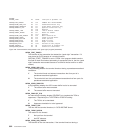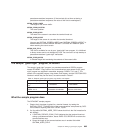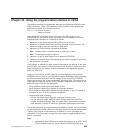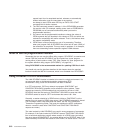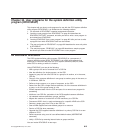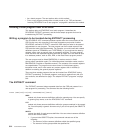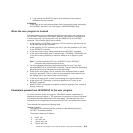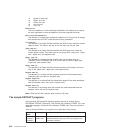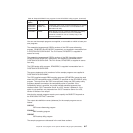
request input from its associated terminal, whereas an automatically
initiated transaction must first send data to the terminal.
An attempt to start CEDA under CECI by an EXEC CICS START
command fails for similar reasons.
2. The RDO command passed in address 1 of the CEDAPARM parameter
list must be valid. (For example, spelling errors such as PRORGAM for
PROGRAM are not corrected automatically when you use the
programmable interface.)
3. You cannot use the programmable interface to change the values of
CEDA keywords that are obsolete in this release of CICS, but which are
retained for compatibility with earlier releases. That is, the interface does
not support compatibility mode.
4. CEDA issues various syncpoints as part of its processing. Therefore,
when your program links to DFHEDAP the current unit of work (UOW) of
the transaction is completed. This may result in problems if, for example,
there are outstanding browse operations against VSAM datasets.
When to use the programmable interface
Remember that you can use the offline utility program, DFHCSDUP, to examine and
amend CSD files; and that DFHCSDUP can be invoked from a user program,
running either in batch mode or under TSO. (See Chapter 34, “User programs for
the system definition utility program (DFHCSDUP),” on page 813.)
Using DFHCSDUP is the recommended method for updating CSD files in bulk.
You should only use the interface described in this chapter where the required
function includes the INSTALL command, which is not available from DFHCSDUP.
Using DFHEDAP in a DTP environment
The LINK DFHEDAP function is intended to be used in a single environment. It is
not supported within a distributed transaction programming (DTP)
environment—using it such an environment can result in abends.
In a DTP environment, CICS may attempt to propagate SYNCPOINT and
SYNCPOINT ROLLBACK requests across sessions to other systems. These
requests are issued by CEDA modules that are invoked by the use of LINK
DFHEDAP. Note that the issuing of SYNCPOINT ROLLBACK means that LINK
DFHEDAP cannot be used in a DTP environment that owns LU6.1 links.
Generally, a session should be in SEND state to initiate a SYNCPOINT, but the
session may not remain in SEND state once a LINK DFHEDAP command is issued.
(For information about valid commands and states, see the CICS Distributed
Transaction Programming Guide. This book also explains the APPC architecture
rules on a session’s state after SYNCPOINT and SYNCPOINT ROLLBACK
requests are made.)
The code invoked by LINK DFHEDAP can result in wrong sequence of commands.
For example, if the code invoked by DFHEDAP issues a SYNCPOINT ROLLBACK
from a back-end application program whose session is in SEND state (and which
has never issued a SYNCPOINT), the session will be put into RECEIVE state. If the
code invoked by DFHEDAP then issues a SYNCPOINT, an abend occurs. This can
810 Customization Guide



